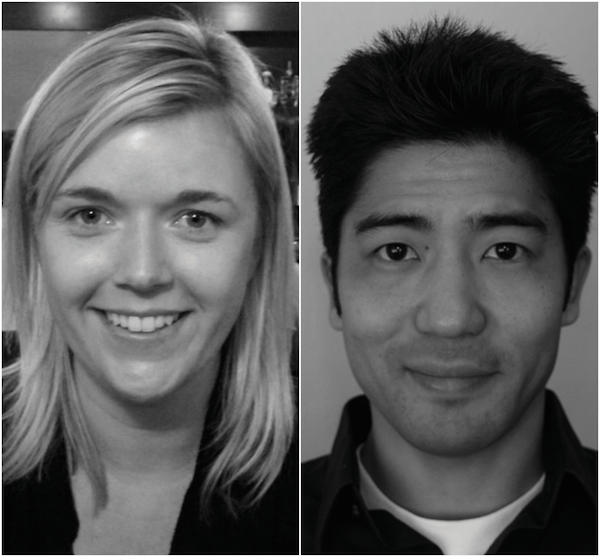
Western Pacific Region
 Emily Birkland and Roy Teshima, Oakland Center
Emily Birkland and Roy Teshima, Oakland Center
On the evening of September 9, 2012, the pilot of N80SS, a Cessna 185 floatplane, transmitted on the Oakland Center (ZOA) emergency frequency that he had executed a forced landing in the Pacific Ocean about 20 miles west of San Simeon, Calif. Pilot Stanley Shaw and his son Stanford Shaw were headed to their annual fishing trip in Alaska from the Los Angeles area on a Visual Flight Rules (VFR) flight when their aircraft suffered an engine failure. The aircraft and passengers had become trapped in a kelp bed with six to 10 foot swells, and a water temperature of about 50 degrees.
ZOA controller Roy Teshima and developmental Emily Birkland were monitoring the emergency frequency at Sector 10 and heard Shaw’s emergency transmissions. Birkland and Teshima were working a low altitude sector, whiich was moderately busy that day with a mix of VFR and Instrument Flight Rules (IFR) traffic, and included active restricted airspace. A large amount of inquiries and information being relayed back and forth through another aircraft, CPF420, and N80SS, increased the situation’s complexity. CPF420 was the first aircraft to relay to Birkland that he had heard the distress call of N80SS. Birkland confirmed she was aware and enlisted his help in finding the downed aircraft, which he located in about 18 minutes. Throughout the search CPF420 also relayed information from N80SS to Birkland, including the aircraft’s distance from San Louis Central Airport and that plane was going to flip over at any moment.
Due to low fuel, CPF420 had to leave the scene. Birkland then enlisted the assistance of the pilot of N4734K, who followed Birkland’s guidance to locate and keep relaying transmissions from N80SS. The pilot of N4734K was instrumental in relaying information from the downed aircraft to controllers and was the only resource available until the United Stated Coast Guard (USCG) (C6555) and California Highway Patrol (CHP71) rescue aircraft responded to the scene. N4734K remained airborne to assist as a communication relay with C6555 and CHP71.
Over the next two hours, Birkland and Teshima obtained information about the rescue through continuous communications with CPF420 and N4743K. The ZOA management team in the area forwarded the information to the ZOA Operations Manger, who coordinated with the USCG and other agencies.
Both father and son were positioned on one of the floats of the plane when rescued by the USCG, just moments before the floatplane inverted and sank. If the two had been forced into the Pacific Ocean they would have most likely succumbed to hypothermia in just 20 minutes. Thanks to the timely actions of the controllers and pilots involved, two lives were saved.
A transcript of this recording can be found HERE.
Listen to the highlights of this event:

